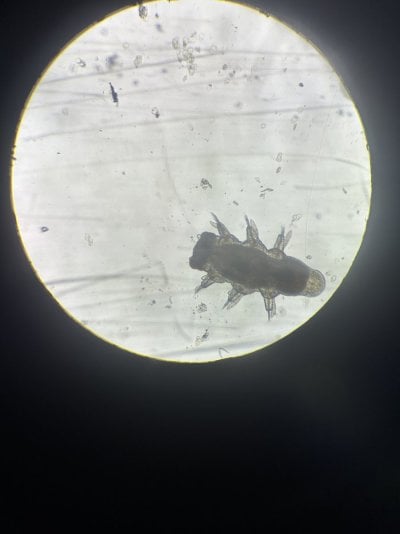Navigation
Install the app
How to install the app on iOS
Follow along with the video below to see how to install our site as a web app on your home screen.
Note: This feature may not be available in some browsers.
More options
You are using an out of date browser. It may not display this or other websites correctly.
You should upgrade or use an alternative browser.
You should upgrade or use an alternative browser.
Bug identification help found on acro
- Thread starter moosevandyke
- Start date
- Tagged users None
Upvote
0
That's a polychaete (a bristleworm) of some variety; you can see the chaetae relatively well, and you can see the parapodium clearly enough to recognize the hooded hooks on bottom.You will definitely need @ISpeakForTheSeas for that crazy looking thing
If I could tell what kind of chaetae it has (the shape of the chaetae), I could identify the family the worm is from for sure, but given the presence of the hooks and what seems to be a rounded, tentacle-free head, my first thought would be Lumbrinerid Worm:
To quote about their diet:
"most lumbrinerids are carnivores on both sessile and motile prey, with a few herbivorous and subsurface deposit-feeding exceptions"*
The carnivorous ones tend to eat things like bivalves, snails, other worms, brittle starfish, and occasionally Heart Urchins (Spatangoida). The herbivorous ones feed on diatoms, sea grass, etc.
*Source:
Diet of Worms Emended: An Update of Polychaete Feeding Guilds - Appendix A - Family-by-Family Review
(The paper)
https://www.annualreviews.org/content/journals/10.1146/annurev-marine-010814-020007 (The link you can download the Appendix from)
Diet of Worms Emended: An Update of Polychaete Feeding Guilds | Annual Reviews
Polychaetes are common in most marine habitats and dominate many infaunal communities. Functional guild classification based on taxonomic identity and morphology has linked community structure to ecological function. The functional guilds now include osmotrophic siboglinids as well as...www.annualreviews.org
Upvote
0
Similar threads
- Replies
- 12
- Views
- 173
- Replies
- 17
- Views
- 204
- Replies
- 4
- Views
- 373
- Replies
- 5
- Views
- 93
















